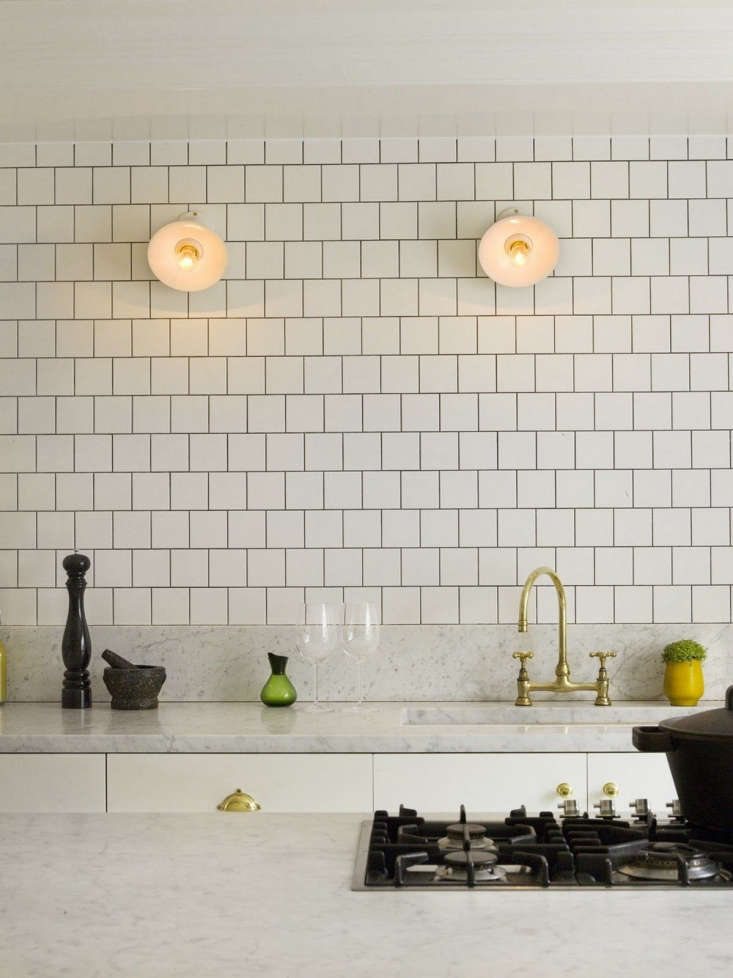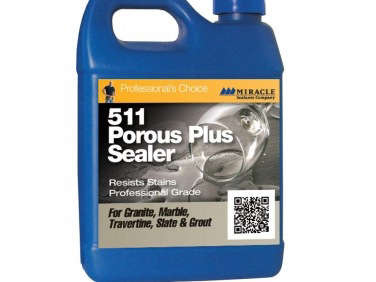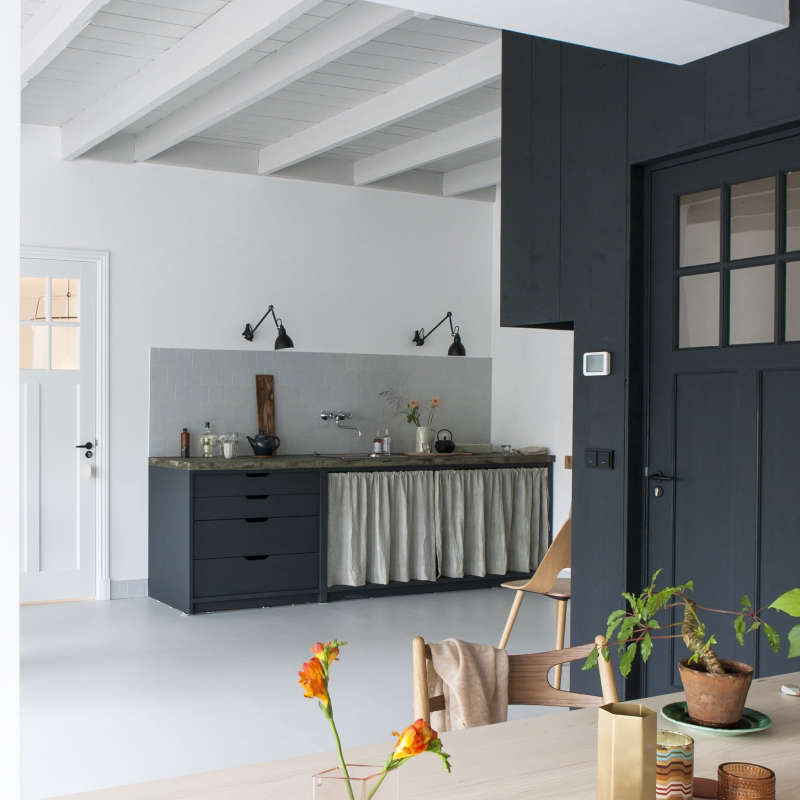Marble has long been used in European kitchens, even though this gorgeous stone can stain and discolor with use. And despite its reputation as high-maintenance, its classic, luxurious look has arrived in many American kitchens. “People like marble for its natural beauty, even though it can show wear and tear over the years,” says expert Michael Bruno, a salesperson with the tile and stone company Ann Sacks. “Every house in Europe has a stone countertop—it’s only in this country that people think everything has to look brand-new.”
A marble countertop in a kitchen where cooking happens won’t always look pristine, no matter how well you maintain it. But that’s part of the beauty of natural stone, says Bruno; over the years it acquires a patina that lends character, and many people consider that an asset. But there are still some things you can do to protect and preserve it. We asked Bruno for his advice on the best way to care for a marble countertop.

1. Start with a good sealant.
“Marble is one of the more porous stones, so you have to protect the surface by keeping it well sealed,” says Bruno. “When you buy the countertop, there’s no sealant on it. You could ask the installer to apply the sealant, but you can easily do it yourself once the countertop is in place.”
Sealant is needed for whatever finish you have on your countertop. The most common marble finishes are either polished, for a high-gloss surface, or honed, which produces a softer matte surface. “These days, ninety percent of marble kitchen countertops are honed,” says Bruno. “That doesn’t show scratches as much as a polished surface, but it does leave the stone more susceptible to stains.”
Applying a penetrating sealant is simple. “Make sure the surface is clean and dry, and just wipe the sealant on with a soft cloth,” Bruno says. Ann Sacks uses Miracle Sealants Porous Plus, but Michael says other products are just as good. “Everyone sells stone sealant—you can get it at Home Depot or just your corner hardware store.” (Miracle Sealants Porous Plus sells for $44 per pint at Home Depot.)
Under normal use, the sealant should last about a year before it needs to be reapplied, Bruno advises, “so long as you aren’t using harsh cleansers on your countertop.” You’ll know it’s time for more sealant when you no longer see water drops beading on the surface.

2. Clean daily—with care.
To ensure that the sealant remains effective, you should wipe down your countertop daily using a nonabrasive cloth or sponge and only a mild soap (such as dish detergent) and water. Clear up spilled food right away, before it can seep in and cause a stain or discoloration (that can happen overnight, even with sealant in place). And obviously, keep some good-sized cutting boards on hand for food prep so that staining substances won’t come in contact with the countertop. Coasters help, too—red wine and coffee-cup rings are common culprits.
“I’ve had people say, “Why does my marble countertop already look horrible only three months after it was installed?’ ” says Bruno. “I ask them what cleansers they’re using, or tell them to ask their cleaning person or their husband. If it’s something abrasive, they’re stripping away the sealant and leaving the stone wide open to stains.”
But stains aren’t the only things you have to be concerned about. Marble is also prone to what’s called etching—that is, dull marks on the surface caused by contact with acidic substances. You’d be surprised how many cooking ingredients are acidic—lemon juice, vinegar, tomato sauce; the list goes on. Etching marks can’t just be buffed away; they require more aggressive treatment.

3. Remove stains and etching.
When cleaning with mild soap and water doesn’t work, or on areas that are “etched,” you’ll need to take more aggressive action. Step up to a cleanser such as Soft Scrub or even Ajax with bleach, applied with an abrasive sponge. That will remove the sealant and allow you to scrub down to the stain. “When you’re done, you’ll find that the area you’ve worked on looks brighter than the rest of your counter,” says Bruno. “So then you need to go on to clean the rest of the counter the same way. Then rinse it thoroughly and let it dry completely—maybe even for a couple of days. Once it’s dry, pour the penetrating sealant all over the surface and spread it around with a soft cloth.”

4. Vanquish stubborn stains.
If you can’t remove a stain by yourself, it may be time to call a stone refinisher. “They’ll do a professional cleaning using special grinders, and perhaps fine-grit sandpaper,” says Bruno. But Bruno doesn’t discourage homeowners from using fine sandpaper on a marble countertop themselves. “Don’t worry about hurting your stone,” he says. “If there’s a nick or chip, you can smooth it out with sandpaper. You can also try that on a stain—just remember to reseal the surface when you’re done.”
As reassurance, he offers this extreme case: “My wife and I recently bought an antique marble table that had been left outside and actually had algae growing on it. I got all the stains out using an electric sander and some diluted bleach.”
Bruno also recommends learning to live with the flaws. “In Italy no one would look at a natural stone countertop and say, ‘Oh no, there’s a stain from a New Year’s Eve party seventeen years ago!’ A little etching and staining is normal wear and tear—it just becomes part of the kitchen.

For much more on marble, see Remodeling 101: Marble Countertops and Remodeling 101: The Difference Between Carrara, Calacatta, and Statuary Marble.
And for more on different types of countertops (pros, cons, and maintenance level included), see:
- Remodeling 101: Butcher Block Countertops
- Remodeling 101: Concrete Countertops
- Remodeling 101: Soapstone Countertops





Have a Question or Comment About This Post?
Join the conversation (0)